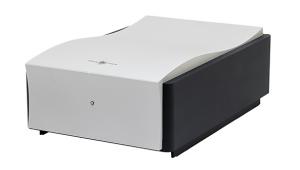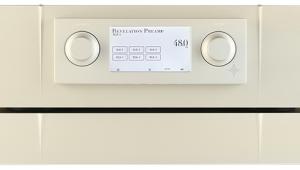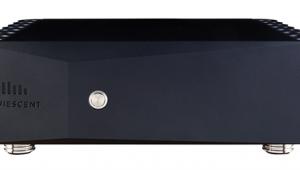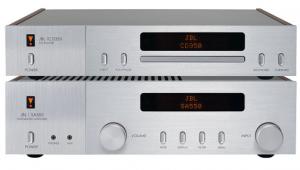Luxman P-750u headphone amplifier

 Luxman’s update of its fully-loaded, flagship headphone amplifier has resulted in the heavyweight P-750u – is this incarnation a contender for the best of the breed?
Luxman’s update of its fully-loaded, flagship headphone amplifier has resulted in the heavyweight P-750u – is this incarnation a contender for the best of the breed?
Decades on from the likes of the EarMax, AudioValve RKV and other pioneering headphone amps, born before cans became a ‘thing’, we are now spoiled for choice. Luxman, which has been on dazzling form of late, has upgraded its no-compromise champ to produce the P-750u, and it just may be the go-to unit if you’re 1) crazy for cans, 2) use various models and 3) love added fine-tuning control.
At £4000, the P-750u has to compete with the best. It takes on all-comers through its mix of purism and completeness. With Oppo leaving the audio business, the gloves are off, so this will have to compete with an array of rivals from Pathos, Audeze, Chord, Sennheiser, Unison Research, Audio-Technica [the AT-HA5050H is a personal fave, HFN May ’16], Fostex and a host of others – including a bargain from sister brand Quad.
All Analogue
Of course, one narrows the field by choosing either a headphone-amp-only unit or one of the now-common models with built-in DACs. This is a personal choice, determined by need or preference rather than ultimate quality. It does not deserve to be an ‘us-versus-them’ topic as it’s down to practicalities. Standalone DACs have been with us for decades, and the sort of customer for a high-end headphone amp will probably already own a decent DAC, so Luxman will suffer no disadvantage by producing a straight-line, non-DAC unit.
I’m not bothered either way, as ultimately it’s the sound via cans that matters here, regardless of the location of the DAC in the chain. Luxman, by eschewing a DAC and delivering what is essentially an analogue device, has, for all intents and purposes, produced what by any definition is ‘an integrated amp minus speaker terminals’.
That is not hyperbole: as PM points out in his Lab Report, this will outgun certain 300B-equipped single-ended triode amplifiers feeding horns. Luxman might consider actually adding a pair of speaker terminals in the next iteration, which would enhance its flexibility.

Having dealt with this unit’s purism, it’s the completeness of the design that will make it a guaranteed short-lister for the hard-core. While resembling the earlier P-700u, the differences inside the P-750u are evolutionary, the only visual clue being a change to the front panel outputs and one minor aesthetic detail. The P-700u accommodated two unbalanced pairs of cans with ¼in sockets and one balanced pair through two XLR sockets for separate left-and-right three-pin connection.
In the P-750u, one of the ¼in sockets has been removed and replaced with a balanced output for headphones wired with a single 4-pin XLR cable as Headphone No 2. The legacy separate left/right 3-pin sockets have been retained as Headphone No 3, No 1 being the ¼in socket. Other than those changes, the operational controls are absolutely the same.
Circuit Boost
Inside, Luxman has bolstered the power supply for the pre-driver stage while its proprietary ‘Only Distortion Negative Feedback’ (ODNF) circuit has been upgraded to version 4.0 [PM discusses these inner workings in his Sidebar]. Externally, with the old and the new being all but interchangeable, the details are the stuff geeks feed on, e.g., the ’750 sits on ‘density-gradient’ cast iron legs, where the ’700 uses aluminium. The aforementioned aesthetic detail change is a mirror-finished rhodium-plated logo, making the front panel a bit more bling-y than the ’700’s.
As with the ’700, across the front are a blue on/off LED, power on/off pushbutton, the input selector for one single-ended source and two balanced. There’s a throughput selector for bypassing the unit in order to send a line source straight to an amp, and the array of headphone outputs delineated above. Next is the output button, which scrolls through the three headphone outputs, beginning with the unbalanced pair. Alongside the sockets can be found a sensitivity selector for 0dB, –6dB and –12dB, identified as High, Mid and Low [see PM’s Lab Report].
Lastly is the rotary volume control, but please note that its presence doesn’t mean that this can be used as a preamplifier. The volume control does not operate on the feed to the line outputs when using the ‘through out’ bypass mode. The instructions also tell you to set the volume control fully counter-clockwise to zero when using this mode.
Less clear-cut is the sensitivity selector for better matching to one’s headphones. Given that power wasn’t even an issue with the hungry Beyer DT-48s, this wasn’t really that big a boon to set-up. Instead, I found it had other effects on the sound, so I used it by ear for quality rather than level matching. And, as ever, nothing was predictable. Some of the ultra-hungry cans sounded better on the high setting and vice-versa with the easy-to-drive models.
This, like the matter of with-or-without-DAC, has to be dealt with for what it is: an optional operational facility. I am fed up with the autocratic, nay, Draconian manner in which audiophiles are bullied, as in the You-Must-Despise-Tone-Controls movement introduced by Flat Earthers in the 1970s. (Their dictionaries missed the word ‘bypass’.) So please, feel free to use the sensitivity selector according to your ears, not a spec sheet.
![]() Cans On
Cans On
One thing I did to try to level the playing field was to fit any headphones having detachable cables with either Nordost’s excellent Heimdall 2 or Blue Heaven, from a selection with assorted terminations. With some models, I was also able to try balanced vs. single-ended and twin-cable (3-pin XLR) balanced vs. single-cable (4-pin XLR) balanced. Every model was used in single-ended mode with a ¼in jack.























































